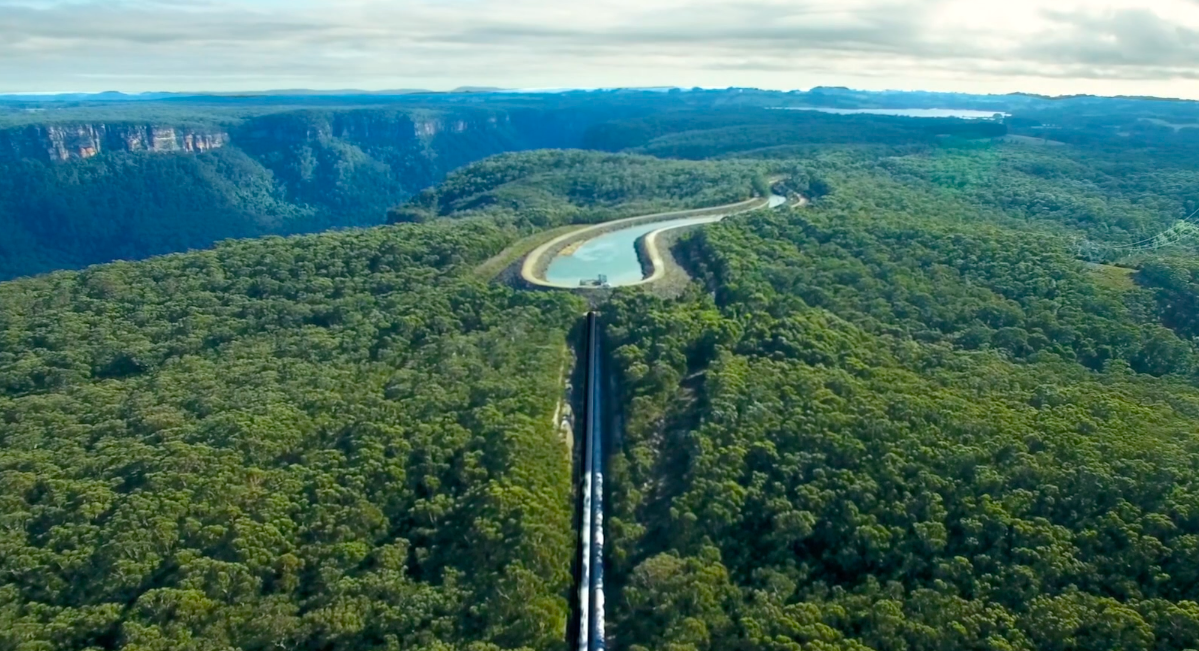Some 2,150 MW of energy storage projects have been awarded a total of $7.1 million for pre-investment studies under the NSW Government’s Emerging Energy Program, state Minister for Energy and Environment Matthew Kean announced today.
“These projects will help show the way for new technology, making it easier for other projects to come online, increase competition and put downward pressure on prices,” the Minister said in a statement released this afternoon.
Among the projects receiving grants of up to $500,000 for feasibility studies are the 600 MW Oven Mountain Pumped Hydro Storage project first proposed more than two decades ago. It plans to utilise two naturally occurring granite basins, with a height differential of 600 metres, and located 2.5 kilometres apart to create a closed-loop pumped hydro plant that can generate for up to 6 hours at capacity, on Oven Mountain between Armidale and Kempsey.
Other large-scale projects receiving grants under the program include the 100 MW Burong Energy Station battery, proposed by Energy Estate to be colocated with a solar farm in south-western NSW; and the Dungowan Dam Pumped Hydro proposal, which is part of Walcha Energy Project’s potential 4 GW solar, wind and pumped-hydro hub in the New England tablelands.
In terms of “emerging energy” technologies, the 200 MW Advanced Compressed Air Energy Storage (A-CAES) project proposed by Hydrostor Australia for Broken Hill, most fits the description.
Hydrostor this month confirmed its plans for Australia’s first advanced compressed air energy storage (A-CAES) facility — the 5 MW/10 MWh Angas Project in South Australia, which will store excess solar and wind power at a closed underground mine.
Energy on demand to kick the coal bucket
The ability to provide dispatchable or on-demand energy is the principal requirement of the $75 million NSW Emerging Energy Program which was launched in October 2018 and closed for applications on 2 April.
It is designed to support replacement of the State’s ageing coal infrastructure over the coming 15 years, as fossil-fuel-powered plants such as Liddell and Eraring Power Stations are retired.
This month, Minister Kean told pv magazine, “The Australian Energy Market Operator has found that firmed renewables are the cheapest way to deliver reliable electricity.” Today’s announcements show the NSW Government commitment to ensuring secure and reliable power from the state’s huge intermittent solar and wind resources.
In an interview with pv magazine earlier this month, Kean also heralded his department’s strong interest in virtual power plants (VPPs), saying, “We need to ensure that distributed energy resources are supporting the whole grid and not just people who have solar installed in their homes.
“Virtual power plant technologies will give us an opportunity to do just that, and I want to see them rolled out across the state.”
Capital ideas for NSW emerging energy funding
Five virtual power plants — including a 5MW Sustainable Schools project by Hivve; sonnen Australia’s proposal for a 27.6 MW VPP centred on regional NSW; and a Flow Power 24 MW Corporate Virtual Power Plant — have made it onto the NSW Government shortlist, released this afternoon, of 21 projects eligible for capital funding of up to $10 million per project.
The capital-projects shortlist also features a 72 MW gas-hybrid installation proposed by Goldwind Australia; the 40 MW Newcastle battery energy storage system proposed by RES Australia; a RayGen Resources’ proposal for a 5 MW solar concentrated photovoltaic plant with integrated electro-thermal storage; and an 8.5 MW pumped hydro project at Newstan Colliery, near Toronto in NSW.
The successful recipients of the capital grants will be announced in the first half of 2020 Kean confirmed.
“We’re planning for the future,” said the Minister in his statement, “looking at how we can harness tomorrow’s technology today by encouraging private capital to build the 21st century grid.”
He anticipates that the awarding of the Emerging Energy Program’s feasibility grants, “could see almost $2 billion in private investment,” in the state.
This content is protected by copyright and may not be reused. If you want to cooperate with us and would like to reuse some of our content, please contact: editors@pv-magazine.com.









1 comment
By submitting this form you agree to pv magazine using your data for the purposes of publishing your comment.
Your personal data will only be disclosed or otherwise transmitted to third parties for the purposes of spam filtering or if this is necessary for technical maintenance of the website. Any other transfer to third parties will not take place unless this is justified on the basis of applicable data protection regulations or if pv magazine is legally obliged to do so.
You may revoke this consent at any time with effect for the future, in which case your personal data will be deleted immediately. Otherwise, your data will be deleted if pv magazine has processed your request or the purpose of data storage is fulfilled.
Further information on data privacy can be found in our Data Protection Policy.